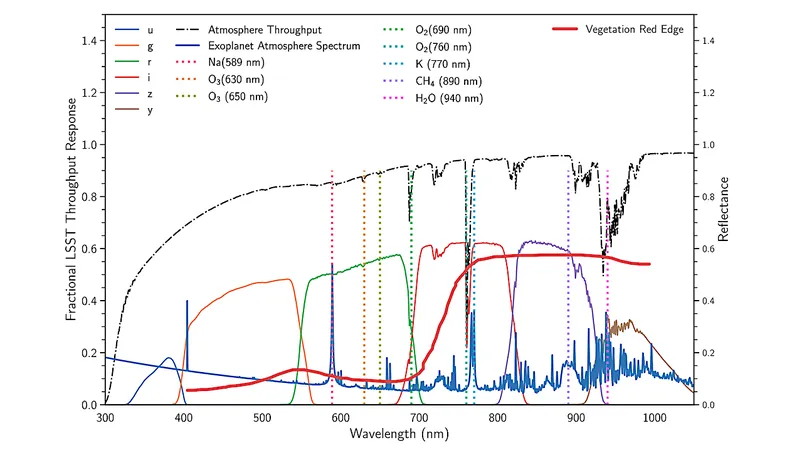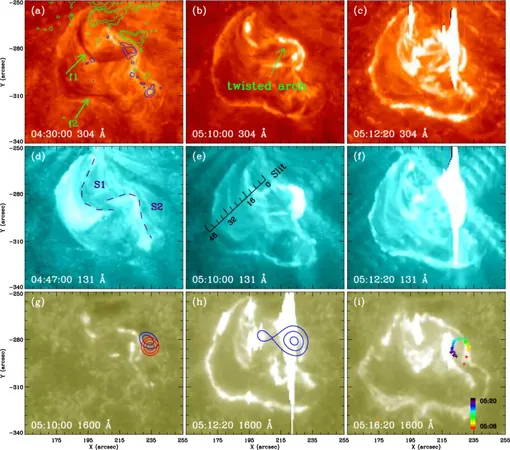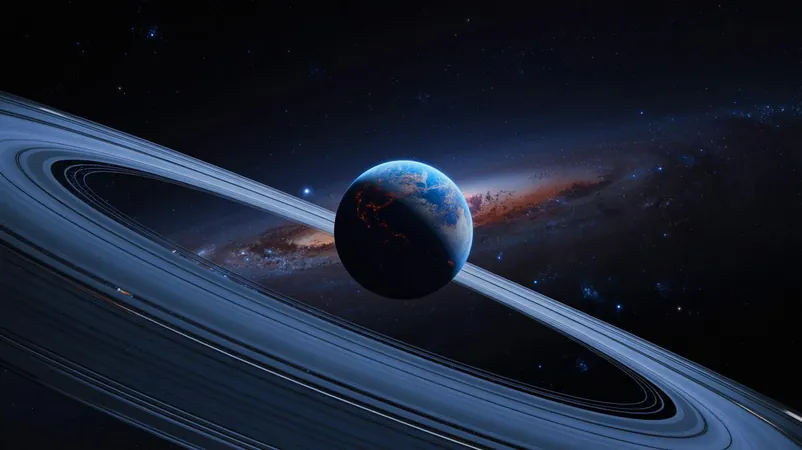
Unlocking the Cosmos: How the Vera C. Rubin Observatory is Revolutionizing Astrobiology
2025-05-24
Author: Yu
A New Era for Astrobiology
The Vera C. Rubin Observatory is set to change the game in our quest for extraterrestrial life. Through its groundbreaking Legacy Survey of Space and Time (LSST), scientists are primed to collect an abundance of astrobiologically relevant data from diverse cosmic environments.
Exploring Our Solar System and Beyond
With its remarkable imaging capacity, LSST will not only enhance our inventory of Solar System objects but also evaluate their potential for harboring life. Peering beyond our cosmic neighborhood, it will investigate billions of distant stars, revolutionizing our understanding of exoplanets and their atmospheres, while identifying transient cosmic phenomena and probing the conditions within habitable zones.
The Mighty Tool at Cerro Pachón
Previously known as the Large Synoptic Survey Telescope, the Vera C. Rubin Observatory is perched atop Cerro Pachón in Chile and boasts the largest digital camera ever made for optical astronomy. Over a decade, it will capture hundreds of stunning images of the Southern Hemisphere sky, racking up a staggering 20 terabytes of data each night. This monumental effort will create the most detailed synoptic survey of our Universe.
Mapping the Invisible: Dark Matter and Cosmic Expansion
On a cosmological scale, LSST promises to map dark matter’s distribution like never before, allowing scientists to gauge the acceleration of the universe's expansion. This will serve as a critical touchstone for modern cosmological theories.
Scanning Near-Earth Objects and Distant Worlds
In our own Solar System, LSST is expected to detect 90% of all near-Earth objects, identifying asteroids larger than 300 meters that come perilously close to our planet. It also aims to further investigate comets and the Kuiper Belt, which is believed to contain nearly 100,000 objects, some as grand as Pluto.
Unlocking the Secrets of Planetary Formation
These celestial bodies are ancient remnants of the Sun's protoplanetary disk, shedding light on the composition and dynamics of primordial materials in our Solar System. They provide invaluable data about prebiotic chemistry, vital for understanding how life began on Earth.
Bridging Solar and Exoplanetary Studies
LSST's unique capability to observe both Solar system and exoplanetary objects paves the way for unprecedented insights. While missions like Kepler and TESS have focused primarily on detecting exoplanets, LSST's observations will complement and deepen this understanding.
A Partnership with GAIA for Stellar Discovery
Working alongside the GAIA mission, which has mapped over 1.5 billion stars, LSST will leverage GAIA’s precise data to enhance its own. With its full-sky coverage and superior depth, LSST will not only identify but characterize faint stars, unlocking new opportunities for discovering and analyzing exoplanets.
The Future of Interdisciplinary Collaboration
This article reviews LSST's transformative impact on astrobiology, examining its cutting-edge technology, synergistic data capabilities, and multifaceted applications across disciplines. By focusing on its technological features and potential, as well as positioning it as a collaborative platform, LSST is set to redefine our approach to exploring life beyond Earth.
Conclusion: A Cosmic Frontier for Humanity
As the Vera C. Rubin Observatory embarks on its ambitious mission, it stands at the forefront of astrobiological research. The next decade promises exciting discoveries that could answer humanity's oldest question: are we alone in the universe?


 Brasil (PT)
Brasil (PT)
 Canada (EN)
Canada (EN)
 Chile (ES)
Chile (ES)
 Česko (CS)
Česko (CS)
 대한민국 (KO)
대한민국 (KO)
 España (ES)
España (ES)
 France (FR)
France (FR)
 Hong Kong (EN)
Hong Kong (EN)
 Italia (IT)
Italia (IT)
 日本 (JA)
日本 (JA)
 Magyarország (HU)
Magyarország (HU)
 Norge (NO)
Norge (NO)
 Polska (PL)
Polska (PL)
 Schweiz (DE)
Schweiz (DE)
 Singapore (EN)
Singapore (EN)
 Sverige (SV)
Sverige (SV)
 Suomi (FI)
Suomi (FI)
 Türkiye (TR)
Türkiye (TR)
 الإمارات العربية المتحدة (AR)
الإمارات العربية المتحدة (AR)